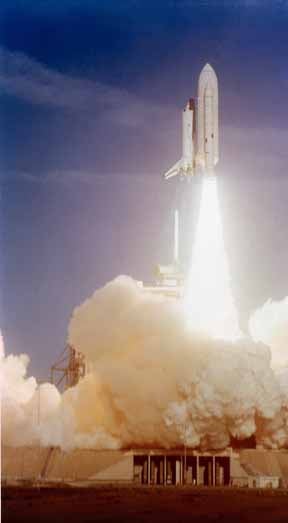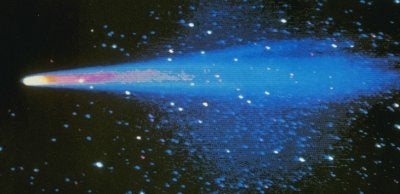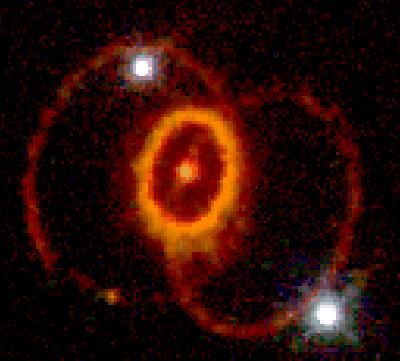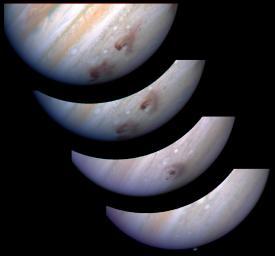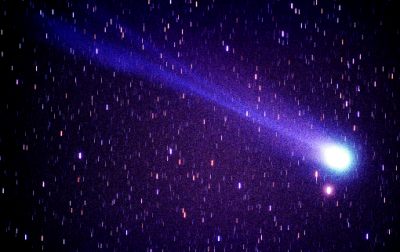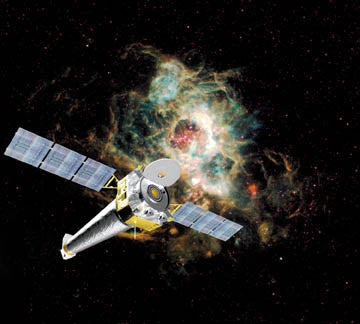Though nearly 22 years have passed since Cosmos first aired, the integrity of the program’s science remains largely intact. Still, the space science community has made many advances since Carl Sagan’s 13-part television series broadcast in 1980. This timeline points out some of the significant discoveries and events in the world of astronomy and space exploration during that year and since.
1980
Cosmos broadcast
Seven moons of Saturn are discovered: Atlas, Calypso, Epimetheus, Helene, Pandora, Prometheus, Telesto
Luis and Walter Alvarez propose KT (Cretaceous-Tertiary) asteroid impact killed the dinosaurs
Voyager 1 obtains close-up images of Saturn’s rings
First space shuttle launches
Andrei Linde proposes new inflationary universe scenario
Andrei Linde develops chaotic inflationary universe scenario
Infrared Astronomical Satellite (IRAS) launches
Paul Horowitz initiates Project Sentinel to search for extraterrestrial intelligence
SETI Institute is founded
1981
1982
1983
1984
1985
Puck, a moon of Uranus, is discovered in Voyager 2 images
International Cometary Explorer (ICE) spacecraft flies through tail of Comet Giacobini-Zinner, becoming the first to encounter a comet
Project META (Megachannel Extraterrestrial Assay) begins searching for signs of extraterrestrial intelligence
Halley’s Comet makes its latest close approach to Earth
Margaret Geller and John Huchra describe bubble structure of galaxy superclusters
SERENDIP II (Search for Extraterrestrial Radio Emissions from Nearby Developed Intelligent Populations) begins operations
Voyager 2 flies past Uranus
Nine moons of Uranus are discovered in Voyager 2 images: Bianca, Belinda, Cordelia, Cressida, Desdemona, Juliet, Ophelia, Portia, Rosalind
Space Shuttle Challenger explodes
1986
1987
Astronomers realize Milky Way and many local galaxies are moving toward “Great Attractor”
Supernova 1987A is discovered
Numerical simulations by Martin Duncan and colleagues confirm short-period comets could come from Kuiper Belt
Magellan spacecraft launches
Voyager 2 flies past Neptune
Hipparcos astrometry mission launches
Galileo spacecraft is deployed from Space Shuttle Atlantis
John Mather presents observations of the cosmic background radiation by the Cosmic Microwave Background Explorer (COBE), which confirm predictions of the big bang theory
Pan, a moon of Saturn, is discovered in Voyager 2 images
Project META II begins extraterrestrial search from southern hemisphere
Hubble Space Telescope launches aboard Space Shuttle Discovery
Ulysses spacecraft is deployed by Space Shuttle Discovery
Burst and Transient Source Experiment (BATSE) aboard the Compton Gamma Ray Observatory finds gamma-ray burst radiation is isotropic
Alexander Wolszczan discovers two planets orbiting a millisecond pulsar
John Mather and George Smoot find fluctuations in cosmic microwave background radiation with COBE
First Kuiper Belt asteroid (1992 QB1) is discovered
SERENDIP III begins operations at Arecibo Observatory
MACHO project begins searching for massive compact halo objects
NASA’s High Resolution Microwave Survey (HRMS) begins searching for extraterrestrial signals from Arecibo and Goldstone observatories
1988
1989
1990
1991
1992
1993
Keck Observatory begins observations
Contact with Mars Observer is lost three days before orbit insertion
Galileo spacecraft images the first known asteroid moon, Dactyl, orbiting asteroid Ida
Space shuttle astronauts fit Hubble Space Telescope with corrective optics
Hubble Space Telescope finds evidence of black hole in the center of M87
Hubble Key Project begins studying Cepheid variable stars to better define Hubble Constant
Michael Rampino and Richard Strothers propose Earth could be periodically struck by comets dislodged from orbits when the solar system passes through galactic plane
Comet Shoemaker-Levy 9 hits Jupiter
Donald Lamb and Bodhan Paczynski debate the distance of gamma-ray bursts
Andrew Gould determines distance to LMC using Supernova 1987A
The SETI Institute launches Project Phoenix
Michael Mayor and Didier Queloz announce discovery of extrasolar planet around Sun-like star 51 Pegasi
Project BETA (Billion-Channel Extraterrestrial Assay) begins scanning the skies
1994
1995
1996
Comet Hyakutake and Comet Hale-Bopp reach peak brightness
Sidney van den Bergh and Gustav Tammann debate Hubble Constant and the scale of the universe
Terry Oswalt and colleagues determine age of the galactic disk from old white dwarfs
Near-Earth Asteroid Rendezvous (NEAR Shoemaker) mission launches
Scientists announce they’ve found signs of primitive life in Mars meteorite ALH840001
Mars Global Surveyor launches
Carl Sagan dies
BeppoSAX determines gamma-ray bursts are extragalactic
Two moons of Uranus are discovered: Caliban and Sycorax
Space Very Long Baseline Interferometry (SVLBI) mission launches
Mars Pathfinder lands on Mars
SERENDIP IV begins operations at Arecibo Observatory
Cassini-Huygens mission launches
Supernovae observations by the Supernova Cosmology Project and High-z Supernova Search team suggest the expansion of the universe is accelerating
Lunar Prospector launches and enters lunar orbit
Jim Peebles and Michael Turner debate nature of universe and whether cosmology is solved
Paul Horowitz initiates an optical SETI program to search for laser pulses from other worlds
Submillimeter Wave Astronomy Satellite (SWAS) launches
BOOMERANG (Balloon Observations of Millimetric Extragalactic Radiation and Geophysics) launches over Antarctica
1997
1998
1999
John Cowan confirms age estimates of globular clusters and universe by dating metal-poor stars
Stardust mission launches
Wendy Freedman and Allan Sandage debate Hubble Constant and the scale of universe
SETI@Home begins distributing data to computers around the world
Chandra is deployed from Space Shuttle Columbia
Mars Climate Orbiter is lost during orbit insertion
Mars Polar Lander stops communicating after landing on Mars
Eleven moons of Jupiter are discovered
NEAR Shoemaker begins orbiting asteroid Eros
Expedition One crew arrives at International Space Station
Very Large Telescope measures the temperature of the early universe
Adam Reiss and colleagues announce the most distant supernova known supports “dark energy” theory
Robert Becker and colleagues use quasar to identify cosmic “Dark Age”
Twelve moons of Saturn are discovered
Lunar soil samples and computer models by Robin Canup and Erik Asphaug support impact origin of moon
NEAR Shoemaker lands on asteroid Eros
Microwave Anisotropy Probe (MAP) is launched
Genesis mission lifts off
Deep Space 1 encounters Comet Borrelly
2001 Mars Odyssey arrives at Mars
Hubble Space Telescope detects an atmosphere around an extrasolar planet
Mars Odyssey detects water in martian south polar cap
Eleven moons of Jupiter are discovered
Chandra X-ray Observatory finds evidence for new matter in “quark stars”
100th extrasolar planet is discovered
2000
2001
2002

